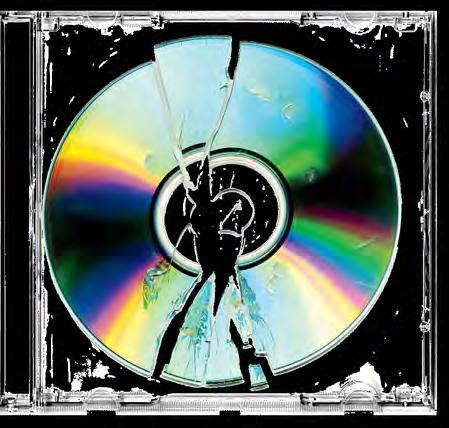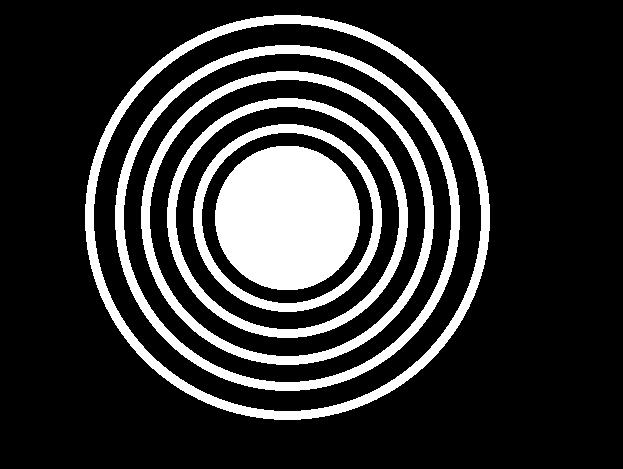
9 minute read
Spotify + Money
History
15 years ago, a man by the name of Daniel Ek began working on a platform where users could pay a monthly fee and be given access to a library full of music. This was a relatively new concept in the music industry, with the current main form of music being services such as iTunes where users would pay a certain fee for individual songs and or albums, equating to an upward price of $10+ per album and $1.79 (NZD) per song. Crazy right? Ek’s concept was to remove this ‘pay to play’ system and present a subscription-based service where users would be given access to millions of songs with the cost of a small monthly fee. Now, all they needed was a name for this new system; the company combined the two words “Spot” and “Identify” to form the name of Spotify.
Advertisement
This new model of music listening became known as streaming which became a common occurrence in the media industry on how users interact with media, proceeding the music purchasing platforms as well as the physical music format as a whole, or did it?

How much can artists expect to earn?
The service offers 70 million songs as well as over 2.6 million podcasts all for free, but with the price of $14.99 a month, it will enable you to download tracks, eliminate ads between tracks as well as granting you unlimited skips on your tracks. This leads to an investigation into how the service can afford to be so cheap while paying its artists a sufficient salary from this, which you would expect right? An infographic released by informationisbeautiful.net displayed data showing artists can expect to earn approximately $0.0016 per stream. Now that is quite a small number, but when you consider that the song Driver’s License made approximately $1,407,276(NZD) from 879 million listens on Spotify, pairing that with the listens from other streaming platforms, that adds up to be quite a sufficient amount now pairing that with the sales of physical format music as well as merchandise and tickets to gigs at bars and venues.
Because of streaming services, it has given artists the privilege of being able to release their music under their own right without a record label, meaning a lot of the time you earn 100% of the profits. Before this it was more difficult for smaller artists to strive because of the record labels and how you needed to appeal to a record label who would invest in your music, paying for recording as well as distributing. In turn earning them a cut out of their music, also known as a royalty rate. This led to artists sometimes being pushed by their record labels to release music more consistently, putting artists under pressure and affecting their creative freedom. In turn, this creates a different system where the distributor becomes the holder of your music, meaning that different distributors can charge you different fees under different agreements. Some distributors will charge you an upfront fee of a smaller sum of money per year, giving you access to release as much music as you please on your Spotify page, with the possible consequence being that they essentially own the rights to your music, meaning they can take your music away from you as you please. Many opt to pay the larger sum of money to give them security over their music, meaning they keep all royalties with the safety in knowing it is theirs to keep.





This source of income was majorly afected because of the impact of Covid-19, globally in 2020 and as of writing this when you are reading in 2021, still afecting the state of the world. Governments putting prohibitions on large gatherings means that artists cannot hold large concerts without precautions, putting a halt to thousands of artists performing globally. Although some countries have eased restrictions, this still means artists are unable to travel to countries that still have their borders closed. This all means artists are unable to reach their audience the same way and proft of of their tickets, leaving Spotify and other merchandise as their last resort. Now if we take the numbers I stated earlier, this would leave a smaller artist who scores 100,000 listens a month on Spotify a total of $110. Not much is it. The celebration of Spotify giving users access to millions of songs and artists means that it is impossible to pay artists a reasonable amount without charging users too much that Spotify could potentially lose them as valuable customers, especially considering that the market price is already so low at the cost of $14.99 per month for most music streaming services and Spotify isn’t planning on raising them anytime soon as they have recently been fghting a battle in court against Apple themselves over the tax the Apple App store raises over any app-based subscription. In 2020 Spotify introduced a feature where Artists could add a fundraising button to their Spotify page where listeners could donate to them to either support the artists or to support a charity of some sort. This has lead to the controversy surrounding whether Spotify should be the ones to pay their artists more instead of leaving it up to the listeners. As a listener, I think it is a good feature to be able to further support the artists you like and unless Spotify is going to start charging us more money to use their premium services anytime soon, I don’t anticipate artists will be getting paid any extra either. Because of this loss of revenue from live performances, artists are stuck with the task of earning money mostly via people keeping the spirit of their music alive by listening to it, and that’s all that can be done.



Accessibility
Because we are able to carry this entire service on our phones which we carry with us practically everywhere we go, it has made listening easier than ever, making it possible to listen to the music you want whenever, wherever. Because of this large variety of music accessible with the tap of your fngers, this has widened the variety of music the user will come across, benefting the artists with more users to potentially be exposed to their music. This is partially due to the algorithms used by the service which compile the songs and particular genre(s) you enjoy and constructing playlists of songs you may or may not listen to that are similar to your listening patterns, helping to expanding your music taste. Many of you reading are probably familiar with these ‘Daily Mixes’ as well as playlist sharing. Arguably one of the best features of the platform is being able to search the database for other user’s playlists or created by Spotify using keywords. I personally was introduced to psychedelic rock by looking up ‘Sleepy playlists’ in the search bar, displaying playlists full of songs you can sleep to. These playlists do have their downsides though. For many, chucking on a playlist based on your mood is more simple than creating your own playlists and having to scramble up songs that you like. These mood playlists are convenient, but a lot of the time you may prefer listening to the playlist and become oblivious to the artist who created the music. This results in less attention to the artists as individuals where they can become clumped under a common theme instead of being recognized individually. This leads me into the next section, why some appreciate vinyl for some of these reasons, recognizing the artists and their albums for their true intentions.
The Return of Vinyl
This here is a chart, showing the ever so often changing usage of diferent music platforms from 2012-2020. That purple line, sad isn’t it? The compact disc really took a hit in 1999 when Napster introduced a free music service to the world wide web which had access to songs uploaded from all over the world for free (highly illegal), then again in 2001 when iTunes released. One platform that really thrived with the slow death of the CD was the Vinyl, the vinyl was a platform that had been running dormant since the 1980s when the Cassette and then eventually the CD took over as an easier, smaller, and more convenient way to listen to music. People still listened to Vinyl, of course, only it was a more scarce industry. When online music platforms started to take the heat, many took a turn back to vinyl. Since 2006 the vinyl industry has increased in popularity by 26.6% in the US alone, commemorating the times when music was not compressed into small audio fles and printed out. You see, when music is recorded, it is recorded in extremely high quality for mixing reasons, too large for you to store multiple on your computer. Because of this, the audio must be compressed and during this process, some of the original quality and detail intended from the producers of the music is in turn lost but the quality is an exchange for practicality. Vinyl on the other hand is a format that doesn’t involve fles, where the pressings are taken straight from the master meaning you don’t miss out on any of that quality.

Many also like to argue that listening to Vinyl over streaming keeps a sense of ownership over your music and adds an appreciative experience for your music, looking after your records, playing an entire album from an artist instead of a ‘best of ___’ playlist on Spotify means you get to appreciate the entire content and story the artist is attempting to tell in their Album, with many artists making the albums come of as one continuous song that is intended to be listened to as one big song instead of multiple.

This leads me to my fnal question. Is Vinyl going to take over? It is probably not as practical as Spotify is, but at the rate currently we are going, I believe many will begin to get into the vinyl industry as a further way to support and appreciate artists and their work. As for Spotify, I hope this piece leaves you educated on how you can further support the artists you love, especially the smaller ones who don’t make it to those top 50 charts. I am not trying to stop you from using Spotify nor making you switch to Vinyl, I am merely bringing light to issues many were previously unaware of.













